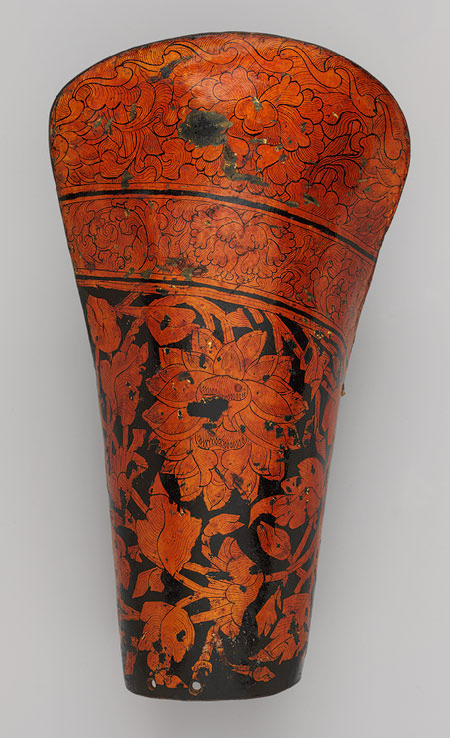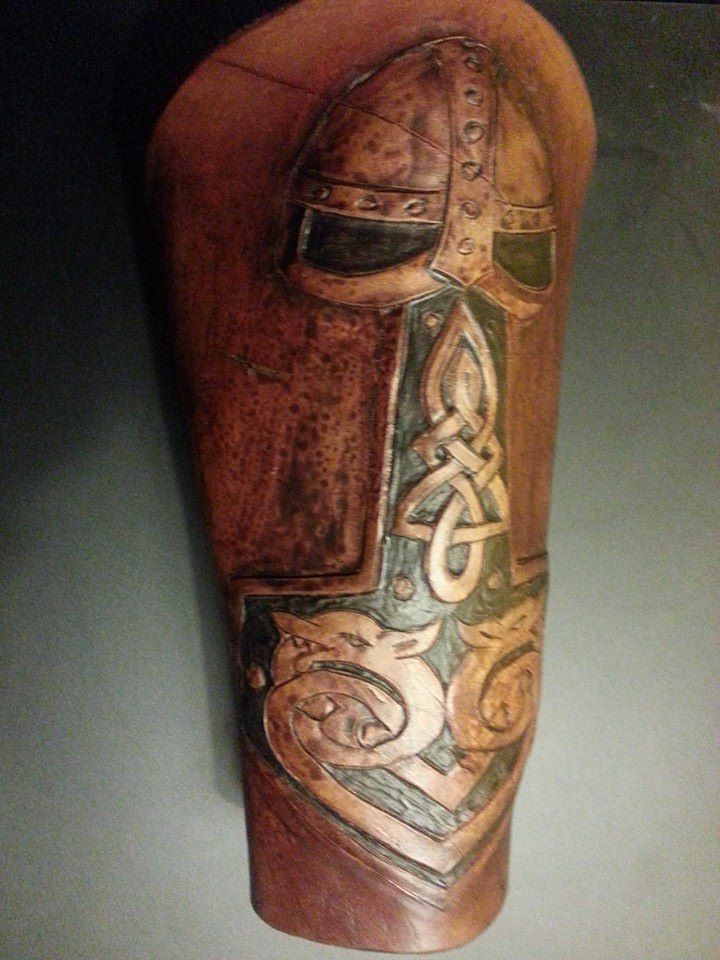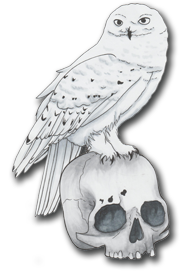Leather Vambrace
Carved, tooled and antiqued leather vambrace, based upon period jewelry, clothing and design.
Project Completed Decebmber 12, 2013
 Vambraces
Vambraces
Vambraces in their simplest definition protect the forearm from impact. Also known as bracers or arm guards, the term vambrace appears to originate somewhere in the 14th century, and generally would use boiled leather, steel or a combination of the two materials. Bracers were used to protect the forearm from impact while in combat, and can range in design and construction throughout period.
(pictured left, a 15th century Tibetan find, click the image for the original at the Met Museum)
What’s not usually stated though is how important this simple piece of armor is to an archer. A single bracer is worn on the inside of the archer’s arm to protect it from string impact. This is important for accuracy, as it keeps the string from becoming entangled on a sleeve, causing an unpredicted fluctuation within the release of the arrow from the string. It’s also important in that the string scraping down the forearm and removing skin. In either event, wearing a bracer while shooting ensures a higher degree of accuracy, and lowers risk of a raspberry patch appearing on your arm.
Decorating Arms and Armor
Arms and armor can be pretty boring, in so many instances one piece looks like the other. Plate depictions and even the Bayeaux Tapestry show many depictions of armored combatants, but leave much to the imagination on the decorations that might have been shown. Armor found within the Tower of London are a stark contrast in use of etching and gilding the plate mail that is on display, and from what I can gather the adornment of armor in gold and silver were a sign of station. For less wealthy individuals, carving, stamping or embossing their arms and armor would have been a more practical method of adornment. As depicted above (from The Book of Costume by Millia Davenport, Plate 573), we can see that even bracers were not exempt from being decorated (in this case it appears to be a metal adornment).
 The exampleabove has no iron fittings, instead the leather itself is varnished and gilded. Decoration in this manner is common within other archery gear that has been found in Tibetan use, such as bow cases and quivers. Shellac was also employed to preserve the decorations throughout the timelines that we study the same as was in use for furniture making techniques.
The exampleabove has no iron fittings, instead the leather itself is varnished and gilded. Decoration in this manner is common within other archery gear that has been found in Tibetan use, such as bow cases and quivers. Shellac was also employed to preserve the decorations throughout the timelines that we study the same as was in use for furniture making techniques.
Norse Stylings
I decided to use a simple knotwork theme, based around Thor’s Hammer, Mjölnir. Since Thor is generally associated with lightning, I thought that it might inspire the wearer of this piece to “rain down arrows like lightning from the sky”.
Bringing It All Together
To put this piece together, I cut the “canvas” from a piece of vegetable tanned leather. I then sketched out the design itself onto the surface of the leather and carved the outlines to give it a better hold during tooling. For the tooling, I used a basic spoon to inlay the majority of the design. The stain is a water based product, but I’ve used multiple shades in order to give a little more depth to the design. To protect the surface and seal the piece, I’ve used a wax product, as I’ve found that the wax gives a nice flexibility to the leather once it’s soaked in and buffed to a light sheen.
The finished piece is pictured to the left. Larger photos can be found in my Facebook albums.
Constructive feedback is both welcome and appreciated, please let me know if I missed some pertinent information or if there's somewhere I can improve.
As always, thanks for reading!
Ihone
